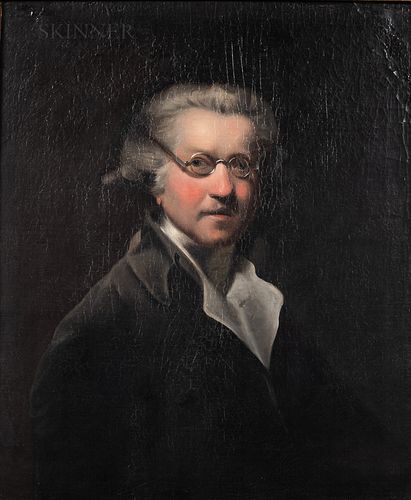After Sir Joshua Reynolds (British, 1723-1792), Copy After Reynolds' Self-Portrait of c. 1788
Lot 1014
About Seller
Bonhams Skinner
274 Cedar Hill Street
Marlborough, MA 01752
United States
Founded over four decades ago, Bonhams Skinner offers more than 60 auctions annually. Bonhams Skinner auctions reach an international audience and showcase the unique, rare, and beautiful in dozens of categories, including the fine and decorative arts, jewelry, modern design, musical instruments, sc...Read more
About Auction
Catalog Only
By Bonhams Skinner
Jun 20, 2022 - Jun 30, 2022
Set Reminder
2022-06-20 12:00:00
2022-06-30 19:00:00
America/New_York
Bidsquare
Bidsquare : European Art
https://www.bidsquare.com/auctions/skinner/european-art-9518
Our June European Fine Art auction offers approximately 50 paintings and drawings from Old Masters to the beginning of the 20th century. Highlights include Biblical, allegorical, and mythological works, fine early portraits, hunting scenes, genre pieces, marines subjects, and still life paintings. Bonhams Skinner bidsquare@bonhamsskinner.com
Our June European Fine Art auction offers approximately 50 paintings and drawings from Old Masters to the beginning of the 20th century. Highlights include Biblical, allegorical, and mythological works, fine early portraits, hunting scenes, genre pieces, marines subjects, and still life paintings. Bonhams Skinner bidsquare@bonhamsskinner.com
- Lot Description
After Sir Joshua Reynolds (British, 1723-1792)
Copy After Reynolds' Self-Portrait of c. 1788
Unsigned, inscribed "H.K./119" in white chalk on the reverse, also with various markings in white chalk on the stretcher.
Oil on canvas, 30 x 25 in. (76.5 x 63.5 cm), framed.
Condition: Lined, retouch primarily to fill lines of craquelure, craquelure overall with areas of lifting in the background.
Provenance: Collection of the late Joseph E. Connolly (1950-2020) of Eaton Place, London. Born in Woburn, Massachusetts, Mr. Connolly lived in Europe most of his professional life, including Antwerp, Brussels, Paris, and Zurich, pursuing a varied career as an internationalist, a banker, an educator, and a patron of the arts and libraries. Among the many charitable boards on which he served was the Advisory Board of Scholar Rescue, which supports scholars whose lives and work are threatened in their home countries, and he was appointed as a US Commissioner for the Public within the Middle States Commission on Higher Education.
N.B. This self-portrait, created towards the end of his career, shows the artist wearing spectacles due to his shortsightedness. The portrait was said to be an excellent likeness of Reynolds at this stage of life, described by the artist's friend Edmond Malone, as "exactly as he appeared in his latter days, in domestick [sic] life." The original is in the British Royal Collection.
The portrait was immensely popular among Reynolds' many admirers, and it was reproduced in oil in different versions, copies, and sizes. The Dulwitch Picture Gallery has one similar in size to the copy at hand, described by the museum as a studio replica. In the Dulwitch version, as in this one, the sitter's left arm, which in the original was raised as if in the act of painting, has been lowered.Condition
Condition: Framed dimensions are 36 1/4 x 31 1/2 x 2 1/4 inches.
Any condition statement is given as a courtesy to a client, is only an opinion and should not be treated as a statement of fact. Skinner Inc. shall have no responsibility for any error or omission. The absence of a condition statement does not imply that the lot is in perfect condition or completely free from wear and tear, imperfections or the effects of aging. - Shipping Info
-
Please visit http://www.skinnerinc.com/services/payment-and-shipping/ for information regarding the collection of items purchased at auction.
-
- Buyer's Premium



 EUR
EUR CAD
CAD AUD
AUD GBP
GBP MXN
MXN HKD
HKD CNY
CNY MYR
MYR SEK
SEK SGD
SGD CHF
CHF THB
THB


























